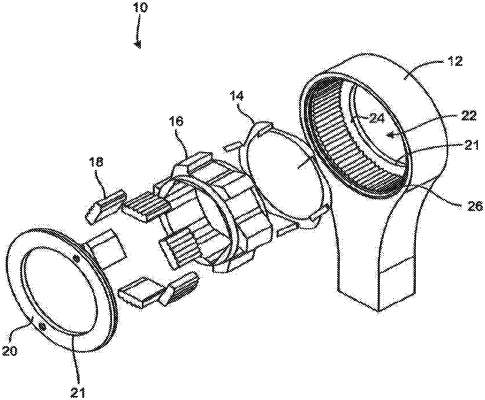| CPC B25B 13/465 (2013.01) [B25B 13/04 (2013.01); F16F 1/26 (2013.01)] | 16 Claims |

|
1. A ratchet assembly comprising:
a housing defining a cavity and a plurality of teeth formed circumferentially on an inner periphery of the cavity;
a wheel rotatably mounted in the cavity of the housing and comprising:
a socket adapted to engage a nut or other suitable element; and
a pawl recess defined around an outer periphery of the wheel, the pawl recess being bordered by an inclined face on one side and a generally upright face on the other, both extending from the outer periphery of the wheel;
a pawl received in the pawl recess, the pawl having at least one tooth wherein the at least one tooth is provided facing outward from the outer periphery of the wheel to selectively engage with a corresponding one or more of the plurality of teeth formed on the inner periphery of the cavity; and
a spring member mounted in the cavity of the housing and comprising a resilient biasing element extending into and positioned within the pawl recess between the upright face of the pawl recess and a surface of the pawl that generally faces towards the upright face of the pawl recess,
wherein the resilient biasing element spring member, without requiring movement of the wheel, provides a biasing force against the surface of the pawl in a direction that is away from the upright face of the pawl recess and substantially towards the inclined face of the pawl recess to urge the pawl into the inclined face of the pawl recess and, thereby, into contact with the inner periphery of the cavity.
|